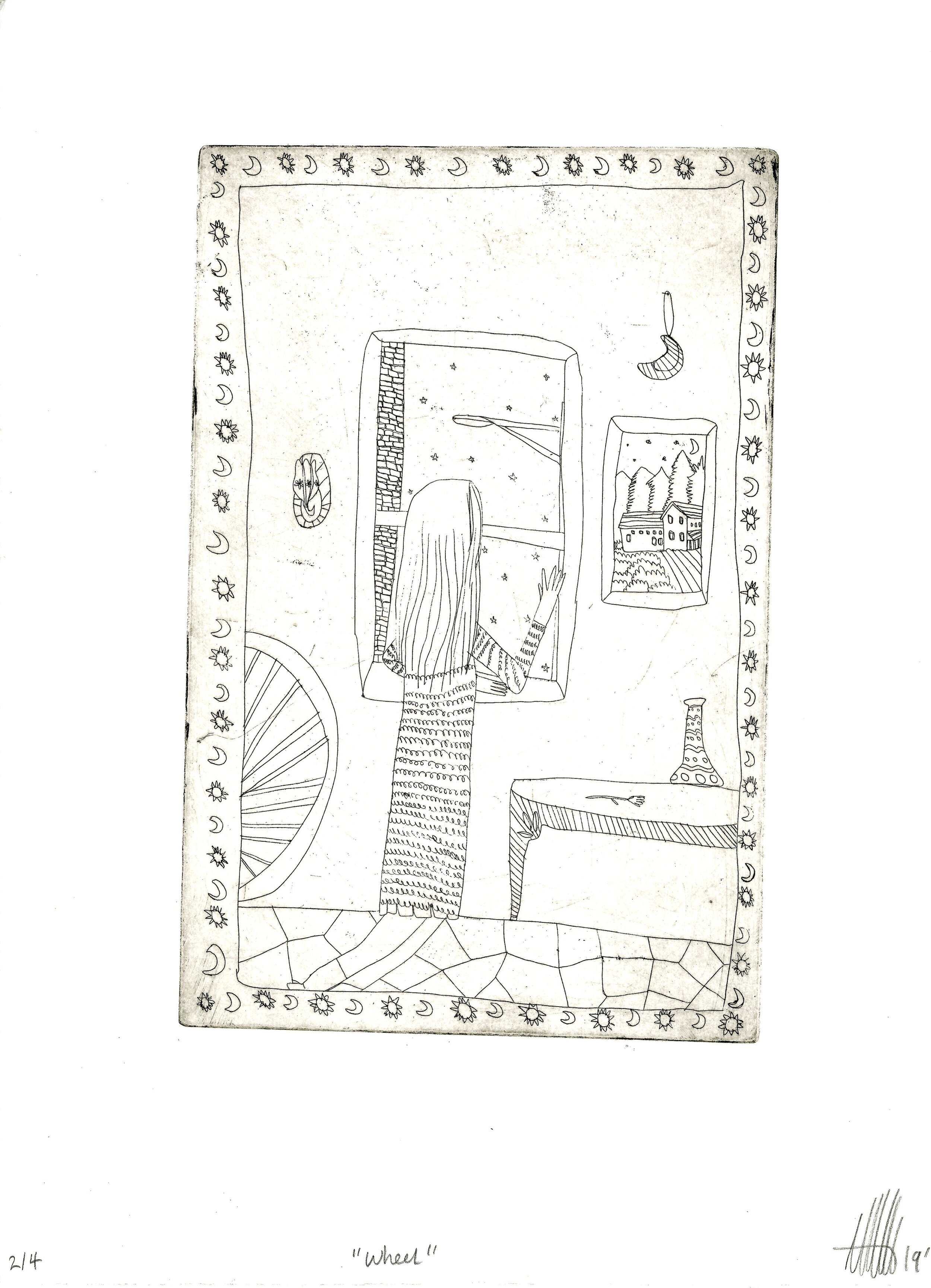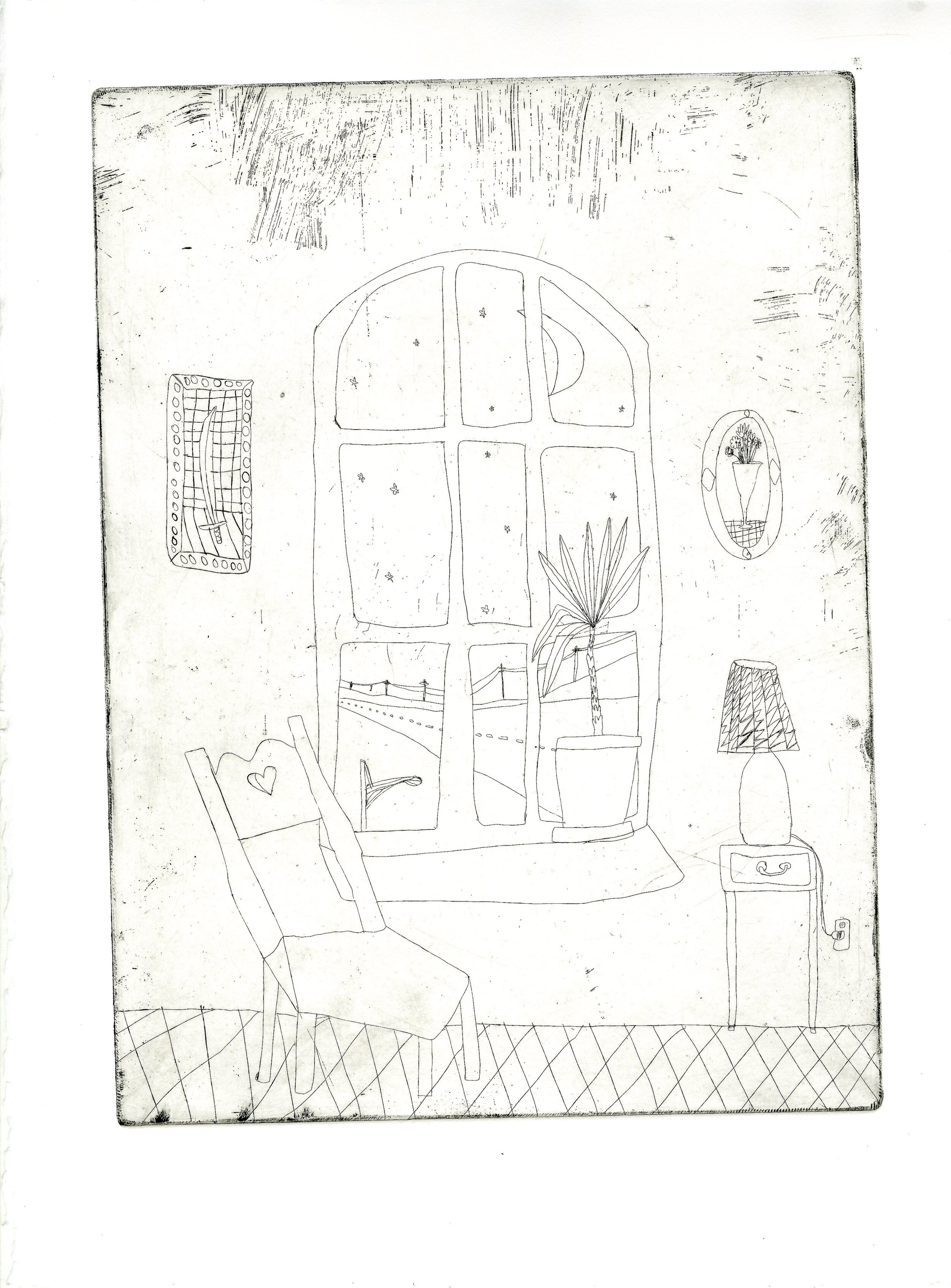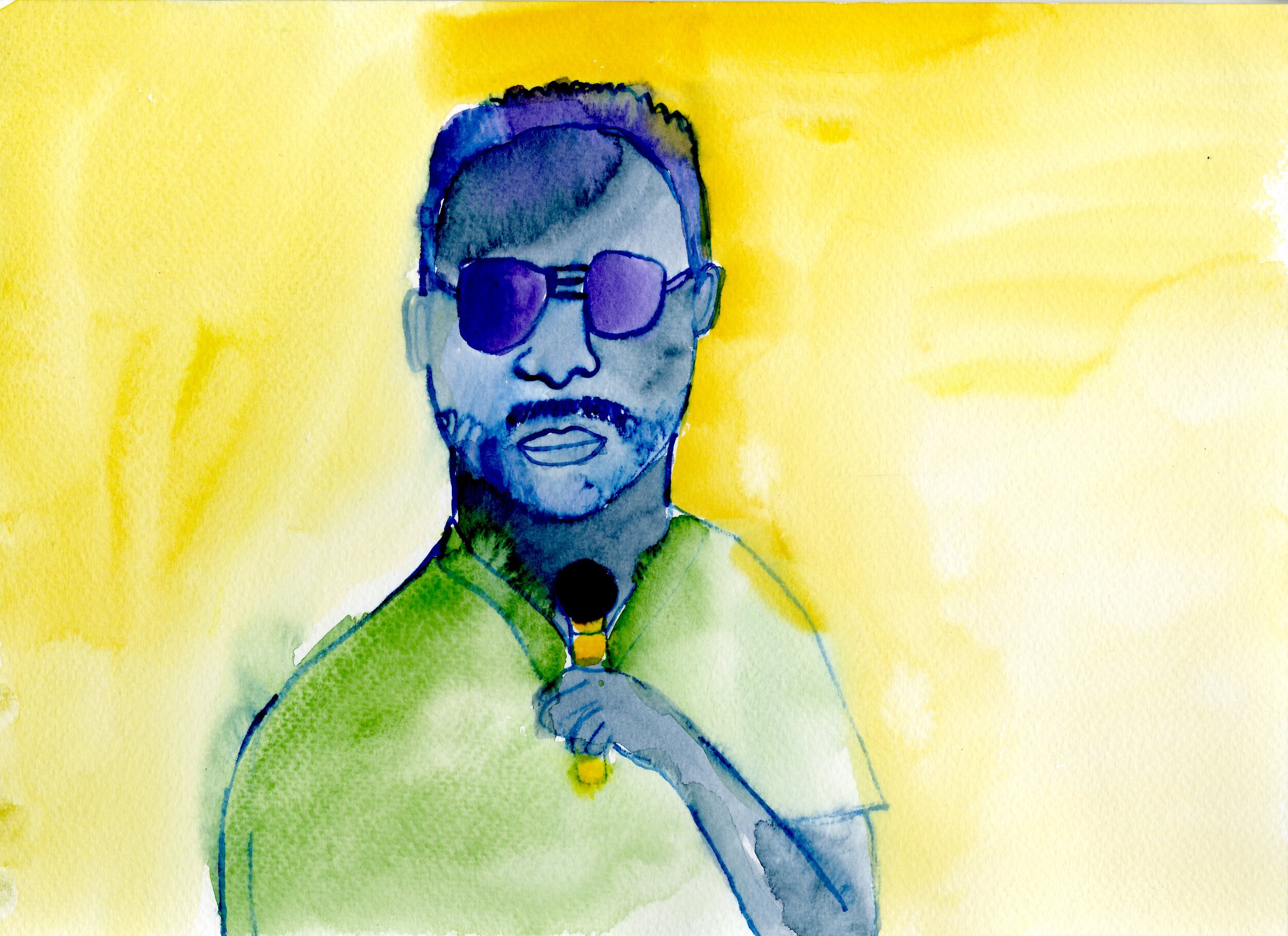Caeli Carr-Potter
Caeli Carr-Potter is a current MFA candidate in the 2-D area at the University of Wisconsin Madison (Madison, Wisconsin). She studied printmaking for her bachelors degree at the Maryland Institute College of Art (Baltimore, MD). Her work utilizes a wide range of materials including fibers, paint, sculpture, collage and comics. Using this interdisciplinary approach, she is able to explore the same concept through multiple mediums, i.e. creating paper mache objects based on objects in her paintings and vice versa. Her recent work with watercolor explores ideas of celebrity culture, middle school obsession and feelings of ambivalence around the difficulty of portraiture as a form. The paintings are made quickly and accumulate, speaking to the obsessive need to describe as many celebrities as possible. Her other work considers questions around personal narrative , autobiography and girlhood. Themes of isolation and solitude also come up often, leading to the depiction of an empty room, or a figure looking longingly out a window. These pieces also explore spatial relationships, as everyday objects such as chairs and tables become flattened and warped. Some figures and characters re-emerge throughout different pieces, such as dogs, windows, chairs and symbols, hearts moons, stars, etc. The work embraces humor and playfulness as important parts of an arts practice. This is emphasized by the artist’s background with comics and zines, as humor has in the past been a useful language through which she can explore darker issues such as mental illness, familial dysfunction and unrequited love. The narrative that moves through the work is often left ambiguous or open ended, partly in order to give an entry point to the viewer. The work asks viewers to bring their own perspectives and memories to it and also encourages consideration of new and strange spaces.

Knife

Spit

Bless This Mess

Chester

Lighthouse

Angel

Peaches

Caretaker

Hex

Bread

Sunday

Spit

Nightwatch

Wheel

Nightwatch











































































Q & A between Karla Centeno & Caeli Carr-Potter
KC: What do you consider when selecting the color palette for each portrait? What role, if any at all, does color play in expression?
CCP: For the watercolor portraits, the color choices I make are pretty quick and intuitive. If anything, with these I’m able to break out of my usual color palette which consists mainly of bright primaries. But I’m definitely thinking about contrast with these, and how each color will interact and sit together. I’m often picking colors that may look odd or unappealing together (I’m a fan of the combination of red and green) to create an unusual effect. It’s interesting too because with the quickness of these watercolors, the colors tend to have a mind of their own and will sometimes bleed into each other, or there will be variations in density that I think add to the rough quality of these. I do notice that I use bright red a lot as well, which to me adds drama and volume to a painting.
KC: You mentioned that your watercolor series "...explores ideas of...middle school obsession..." This idea really resonated with me. Middle school is marked by crushes, teenage angst, obsessions. I wonder what this concept means to you and why the feeling lingers?
CCP: Growing up I was really infatuated with movies and celebrity culture. Film was a really important form of escapism for me and still is to some extent. I was thinking about middle school with these as that can be a pretty difficult time, but also marks the transition from kid to teen. I think around that age there’s this need to divorce yourself a bit from an interior fantasy life and start doing more “adult” things. For me, I had a really hard time doing that. I still go through phases where I become really fixated on a particular celebrity and watch their films/interviews/ read about their lives. It’s fascinating to me that I’m able to become so invested in someone who isn’t present, almost in the same way you can become attached to fictional characters. It’s also not the greatest feeling, because there’s an absence there as well.In the watercolors there’s a desire to capture the appearance of the celebrity, which is always somewhat thwarted, and the desire to be a part of the mythos of the film star, hollywood glamour etc. There’s a discomfort there as well, as part of looking at celebrity is looking at a life that’s almost completely inaccessible. That sort of speaks to this idea of obsession, or desire for something unattainable, which I think is a theme in a lot of the work that I make.
KC: The home is a recurring subject in your etchings. The depictions show doors, windows, mirrors– glimpses into something beyond the image. What is it about the home that makes you depict it? What do you say about the doors, windows, mirrors that appear to be symbolic as opposed to simply fulfilling their usual domestic purpose?
CCP: I’m certainly interested in domestic spaces and interiors, and windows as portals or ways out of those spaces. In my etchings I will use the figure looking out of a window to consider the idea of longing for change or escape. I feel that these environments are meant to look lonely, so the figure has actually gradually started disappearing from these spaces and objects becoming more important to emphasize the absence of that figure. The mirror has become important recently to me as well, in that it acts similarly to a window, showing a separate space, but the mirror also has magical and mythological aspects to it that can be a bit more evocative. They can also reflect something that can’t be seen in the picture plane, as you mentioned with showing something “beyond the image”. I’m definitely a more interior/micro focused person, and I think the details of these more mundane spaces can tell a story just by themselves.
KC: Walk us through your process for creating the pieces in the Witch series.
CCP: I started this series not long before applying to graduate school, when I was living in Baltimore. The first painting I wasn’t totally sure what I was doing, but I was looking around my bedroom at things that were hanging on the walls, postcards etc. and copying those. After I’d finished it, I came up with the idea of this being a sort of map or visual manuscript of a fictional character’s life. The character is a witch, and each painting documents an emotional moment in her life, beginning with a birthday party and ending with a funeral. The character isn’t necessarily specific, but helped bring a story together for each painting. At the same time the paintings also rely very heavily on personal narrative and autobiographical details, but these are inseparable from the other aspects of the paintings. I would often work from photographs I’d taken, or again objects/wall-hangings I owned or found at thrift stores. Working on these involved a lot of copying which I found to be a really interesting and different way of working, as I had become used to drawing only from my imagination. For each painting I would work with an emotional theme, i.e. anger, homesickness, love. The final funeral painting I made right after I’d gotten to Wisconsin, so it records some of the photos I’d taken around then and from the road trip I took to get here. I definitely see these paintings as being inspired by the format of printmaking. The way they’re constructed is a bit rigid and formal, a process that I’ve moved away from since then.






